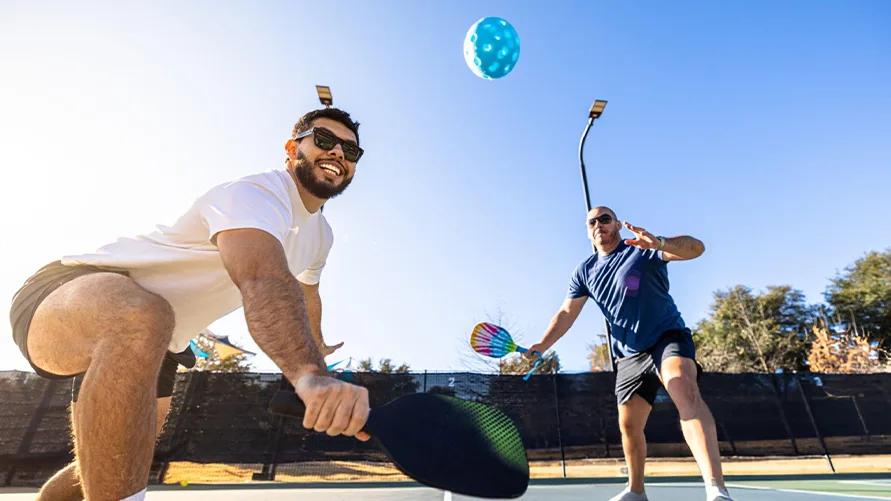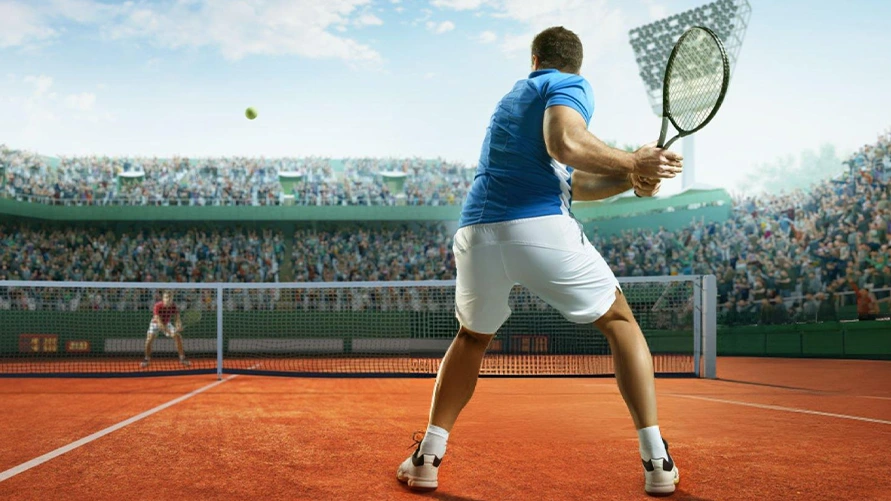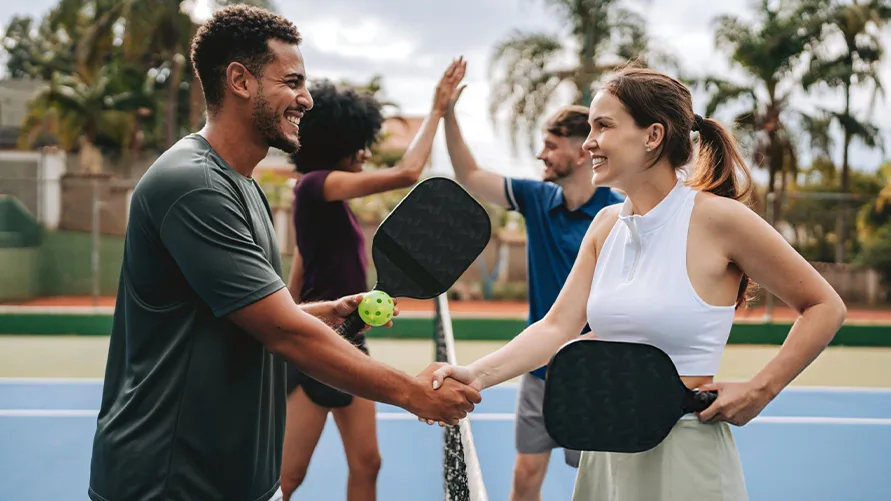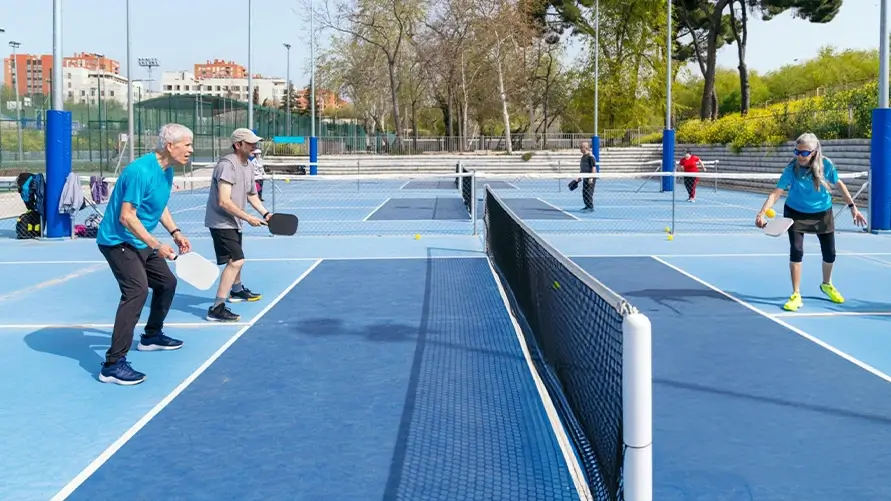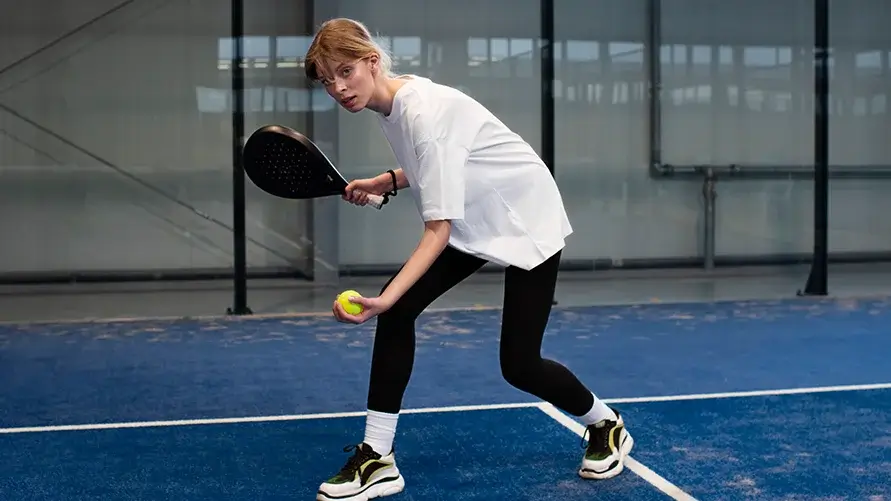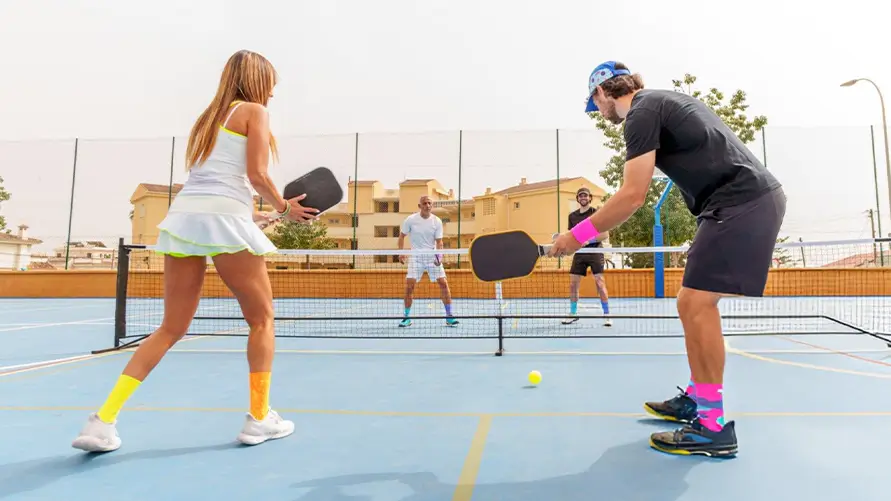They look similar. They sound interchangeable. But they attract completely different crowds and offer completely different business outcomes. So if you have to choose which one to go with, which should it be?
To answer this question, we have to better understand what these relatively new games are about, a little of their history and the kind of people they attract. And of course, the revenues they bring in.
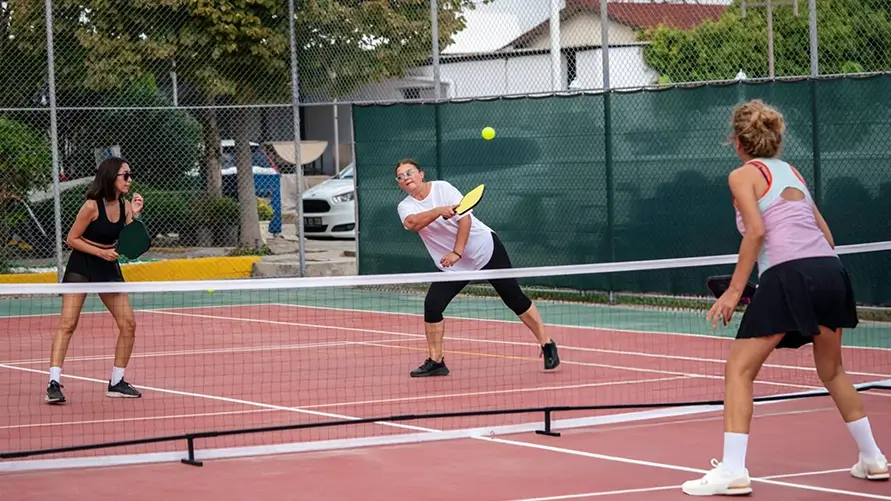
Pickleball brings in the crowds. Paddleball keeps the loyalty. It’s explosive. The other’s sticky. And what no one’s telling you is this: The best choice isn’t just about what’s hot, it’s about what fits your space, your brand, and your bottom line.
First, what’s the real difference?
As per WSBSPORT, Pickleball and paddleball are growing racket sports with different vibes. Pickleball is casual, easy to set up, and ideal for all ages. Paddleball is structured, strategic, and immersive. While both are fun and social, Paddle offers deeper gameplay.
Facility owners must choose between fast trends and long-term experience-driven investments.
Here’s how they differ:
- Court size: Pickleball uses a 20×44 ft court. Paddle Ball uses a slightly larger 20×50 ft court.
- Ball type: Pickleball uses a plastic ball with holes (like a wiffle ball). Paddle Ball uses a soft rubber ball.
- Surface: Pickleball courts are smooth. Paddle Ball is played on a gritty, textured surface for better grip and bounce.
- Walls in play: Pickleball has none. Paddle Ball is played with walls or fences, like squash or racquetball.
- Season: Pickleball is played all year. Paddle Ball shines in the winter. Most Paddle Ball courts are heated from underneath.
Already, you can start to see how space, noise, and cost might shift depending on which direction you go.
What’s hot right now?
There’s no denying it. Pickleball exploded.
It’s the fastest-growing sport in America for the third year straight. According to the Sports & Fitness Industry Association, 13.6 million Americans played Pickleball in 2023, up from 4.8 million in 2021. It’s everywhere: parks, gyms, rec centers, even shopping malls.
Why? It’s easy to learn, fun to play, and works for almost any age or skill level.
But here’s what many court owners are just starting to see: it’s getting crowded. In some areas, players are waiting over an hour just to get on the court. And the sound? It’s loud. That constant pop of the ball hitting the paddle can reach up to 85 decibels, about as loud as a vacuum cleaner. Neighbors notice. So do landlords.
That’s why many smart court owners are now looking at the quiet competitor that’s just beginning to grow.
Paddle ball: the strong, silent contender
Paddle Ball isn’t new, but it feels fresh. It’s been around since the early 1900s, often called “platform tennis,” and now it’s picking up steam again, especially in the Northeast and Midwest, where winters are long.
Here’s what makes Paddle Ball special:
- It’s played indoors or in cold weather with heated courts
- It uses walls, which adds strategy and longer rallies
- It’s a full-body workout, players run, twist, dive, and sweat
- It’s quiet, no high-pitched cracking sounds
According to Harvard Health Publishing, Paddle Ball can burn up to 500 calories per hour, on par with boxing or cycling. That means it attracts a different kind of crowd: younger professionals, fitness lovers, and competitive players who want more than a quick match.
And here’s the part court owners love: you don’t have to rebuild everything from scratch. Many old tennis or racquetball courts can be easily converted into Paddle Ball courts, often for less than converting them for Pickleball.
Pickleball Feels Like a Trend. Paddleball Acts Like a Business Plan.
Think back to Pickleball 10 years ago. Niche. Novel. Exploding.
That’s Paddleball right now.
It hasn’t saturated the market yet. That means less competition, lower noise, and more room to build a brand.
You could be the first in your area to launch:
- Competitive paddleball leagues
- Premium coaching and clinics
- Tech-powered court bookings and leaderboards
- Winter tournaments with heated court access
- Branded merchandise and performance gear
You’re not just offering games. You’re creating an experience. One that attracts serious players and keeps them coming back.
Who’s playing, and who’s paying?
Your decision shapes who walks through your doors.
Pickleball players
- Age: 50+
- Mindset: Social, casual
- Booking style: In groups, short sessions
- Goal: Light movement, fun
Paddleball players
- Age: 25–45
- Mindset: Fitness-focused, competitive
- Booking style: Solo or partner, longer sessions
- Goal: Skill-building, sweat, performance
If your facility is near retirement communities, Pickleball is a strong fit. But if you’re near gyms, coworking spaces, or young professionals, Paddle Ball may be your home run.
Setup costs
Pickleball
- Convert old tennis court: $5,000–$15,000
- Equipment: $500–$2,000
- Fencing/netting: Extra
- Ongoing costs: Balls wear out quickly
Paddle ball
- Convert old racquetball court: $3,000–$7,000
- Build from scratch: $10,000–$20,000
- Equipment: $1,000–$1,500
- Ongoing costs: Low maintenance
And with the right paddleball software, you streamline everything, including bookings, payments, league schedules, and even court access.
You’re not just selling court time anymore. You’re selling a full-service sports experience.
Noise, space, and scheduling power
Noise matters. Pickleball can be too loud for indoor setups or residential areas. Paddle Ball stays quiet and focused—no echoing pops, no noise complaints.
And what about court time?
- Pickleball games are short (15–25 minutes), which means more rotation but more player switching.
- Paddle Ball games run longer, meaning fewer transitions and deeper player engagement.
With paddleball software, you can easily manage both. Block sessions, set waitlists, automate alerts, it’s like having a front desk that runs itself.
Pickleball or paddleball?
You don’t need to guess anymore. You’ve seen the facts.
- Pickleball is everywhere, but also noisy, crowded, and highly competitive.
- Paddle Ball is growing, quietly, powerfully, and with a fitness-first crowd.
So, what kind of court are you building?
If you want volume, variety, and older players, Pickleball is a good move.
But if you want fitness, focus, and loyal customers who stick around, Paddle Ball might be the smarter play.
And when you combine that with powerful pickleball club management software that keeps your operations smooth, you’ve got more than a court.
You’ve got a community. A brand. A movement.
Make the Switch. Lead the Change.
The future isn’t about following the trend.
It’s about owning the opportunity.
So before you resurface that court, order that net, or hang that new sign, ask yourself this:
Do I want to blend in… or stand out?
